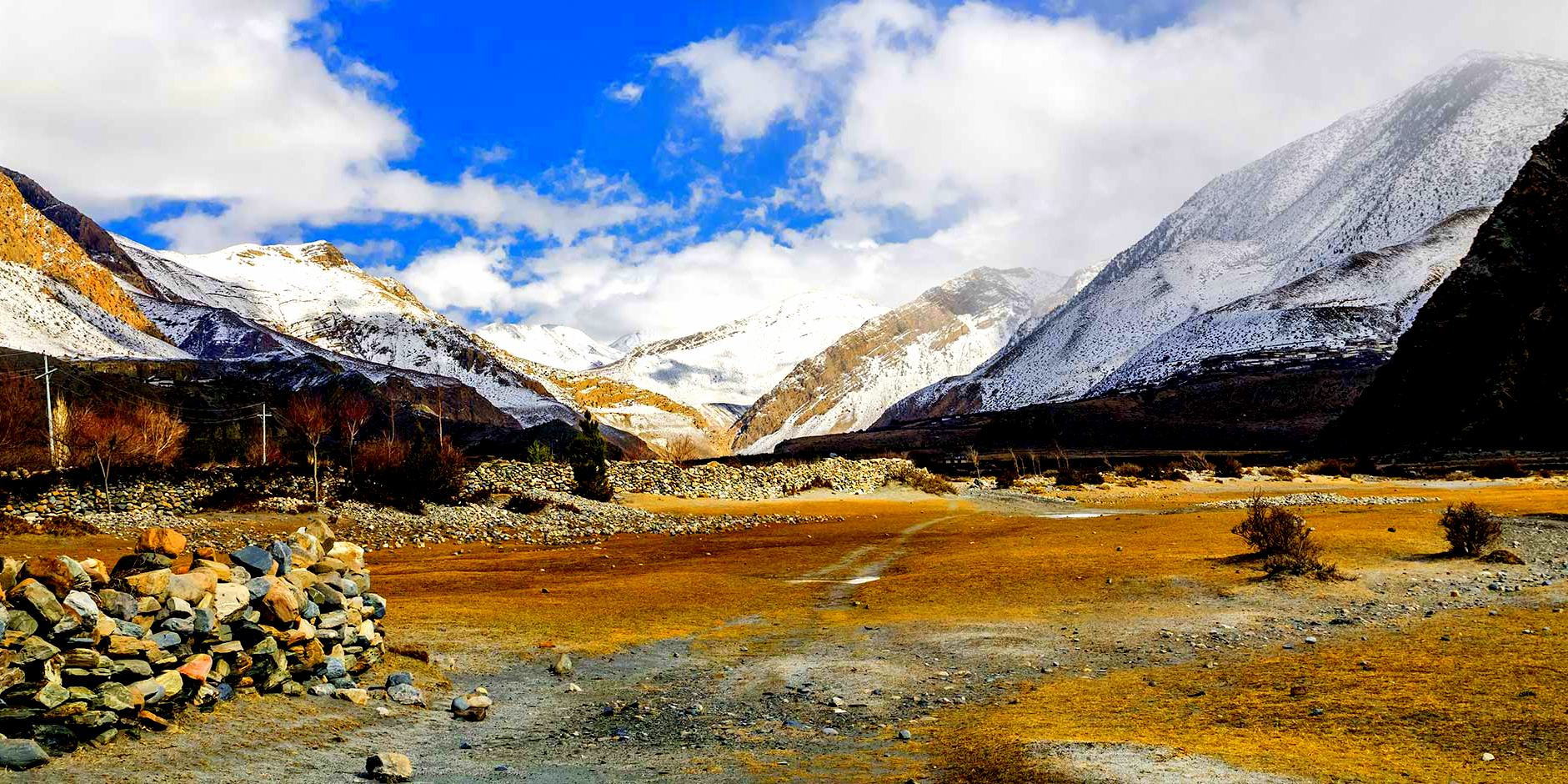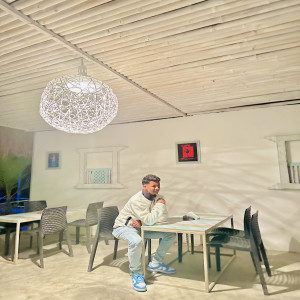Manaslu Circuit Trek
The Manaslu Circuit Trek is an extraordinary adventure that takes trekkers around Mount Manaslu, the world’s eighth-highest peak, standing at 8,163 meters. Situated in a remote part of Nepal, this trek offers a perfect blend of cultural richness and breathtaking natural beauty, making it a top choice for those eager to explore less-crowded trails.
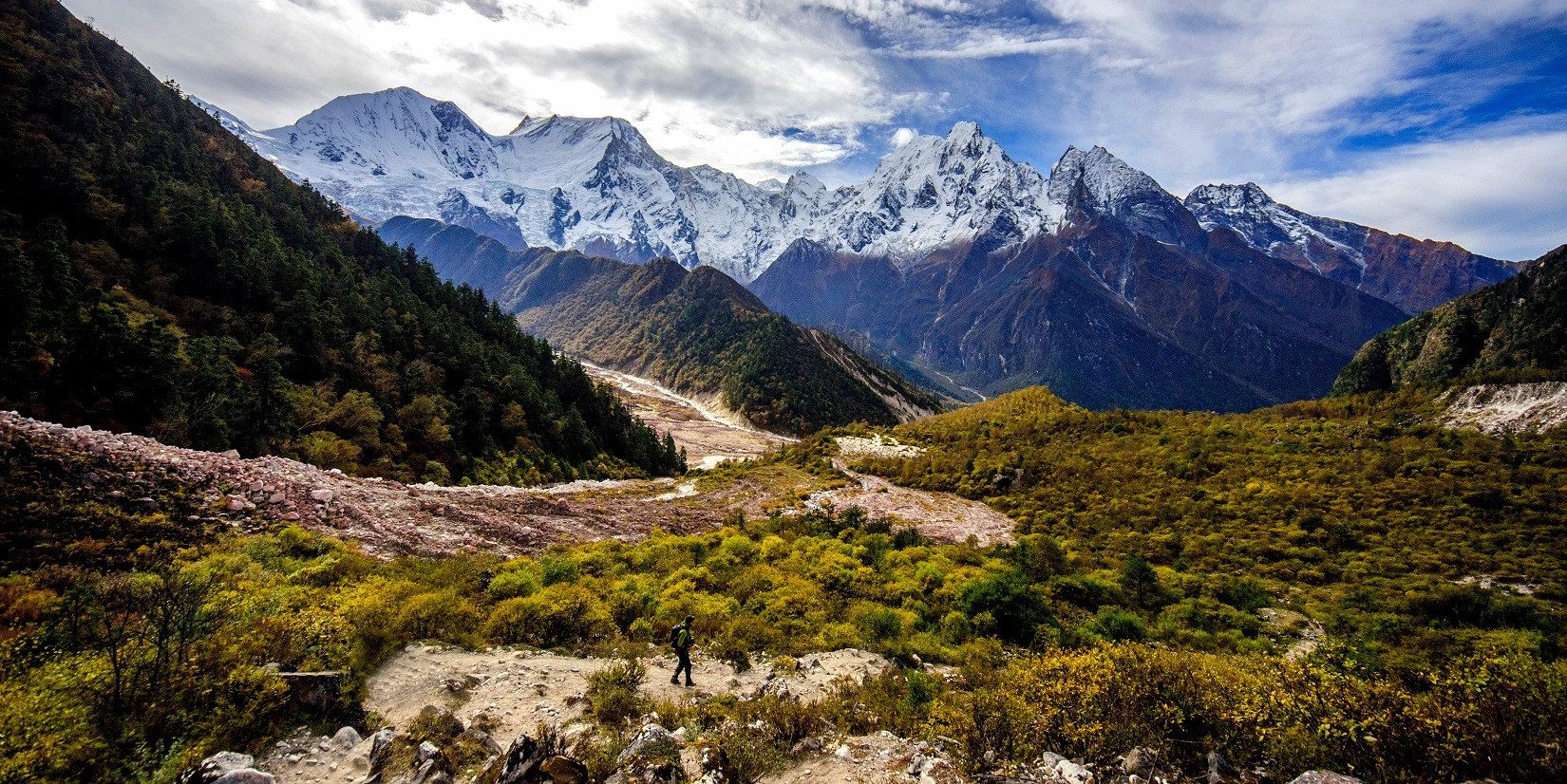
Key Features of the Manaslu Circuit Trek
-
Stunning Scenery: The trek treats adventurers to magnificent views of Mount Manaslu, along with other towering peaks like Himalchuli, Ganesh Himal, and several others soaring over 6,000 meters. The trail winds through lush forests, picturesque alpine meadows, and eventually reaches the high-altitude, rugged terrain near the Tibetan border.
-
Larkya La Pass: A highlight of the trek is crossing the iconic Larkya La Pass, one of the Himalayas’ most dramatic and highest passes at 5,106 meters. From the top, trekkers are rewarded with awe-inspiring views of the surrounding snow-capped peaks and vast Himalayan landscapes.
-
Cultural Experience: The trek takes you through numerous remote villages, offering a glimpse into the daily lives of the local people. The region is predominantly home to the Nubri and Tsum communities, whose unique cultures and traditions are influenced by both Nepalese and Tibetan heritage.
-
Rich Biodiversity: The Manaslu Conservation Area is teeming with diverse flora and fauna. Trekkers may spot Himalayan Tahr, Blue Sheep, and, if lucky, the elusive Snow Leopard. The area is also a haven for bird enthusiasts, with a variety of bird species enhancing the natural charm of the trek.
-
Less Crowded: Compared to popular treks like the Everest Base Camp and Annapurna Circuit, the Manaslu Circuit offers a quieter and more peaceful trekking experience, allowing adventurers to connect deeply with nature and enjoy the solitude of the Himalayas.
The Manaslu Circuit Trek is a thrilling and enriching journey, offering a combination of stunning natural beauty and deep cultural immersion in Nepal's Himalayan region. Its challenging trails, jaw-dropping landscapes, and the chance to experience the lives of remote Himalayan communities make it an unforgettable adventure. For those seeking solitude, raw beauty, and a profound connection with nature, the Manaslu Circuit is the perfect choice.
Kanchenjunga Base Camp Trek
The Kanchenjunga Base Camp Trek is a breathtaking journey to the base camps of Mount Kanchenjunga, the third-highest peak in the world, towering at 8,586 meters. Located in the remote eastern region of Nepal, this trek offers an authentic Himalayan experience, making it a perfect choice for trekkers seeking a challenging adventure that blends pristine wilderness with rich cultural encounters.
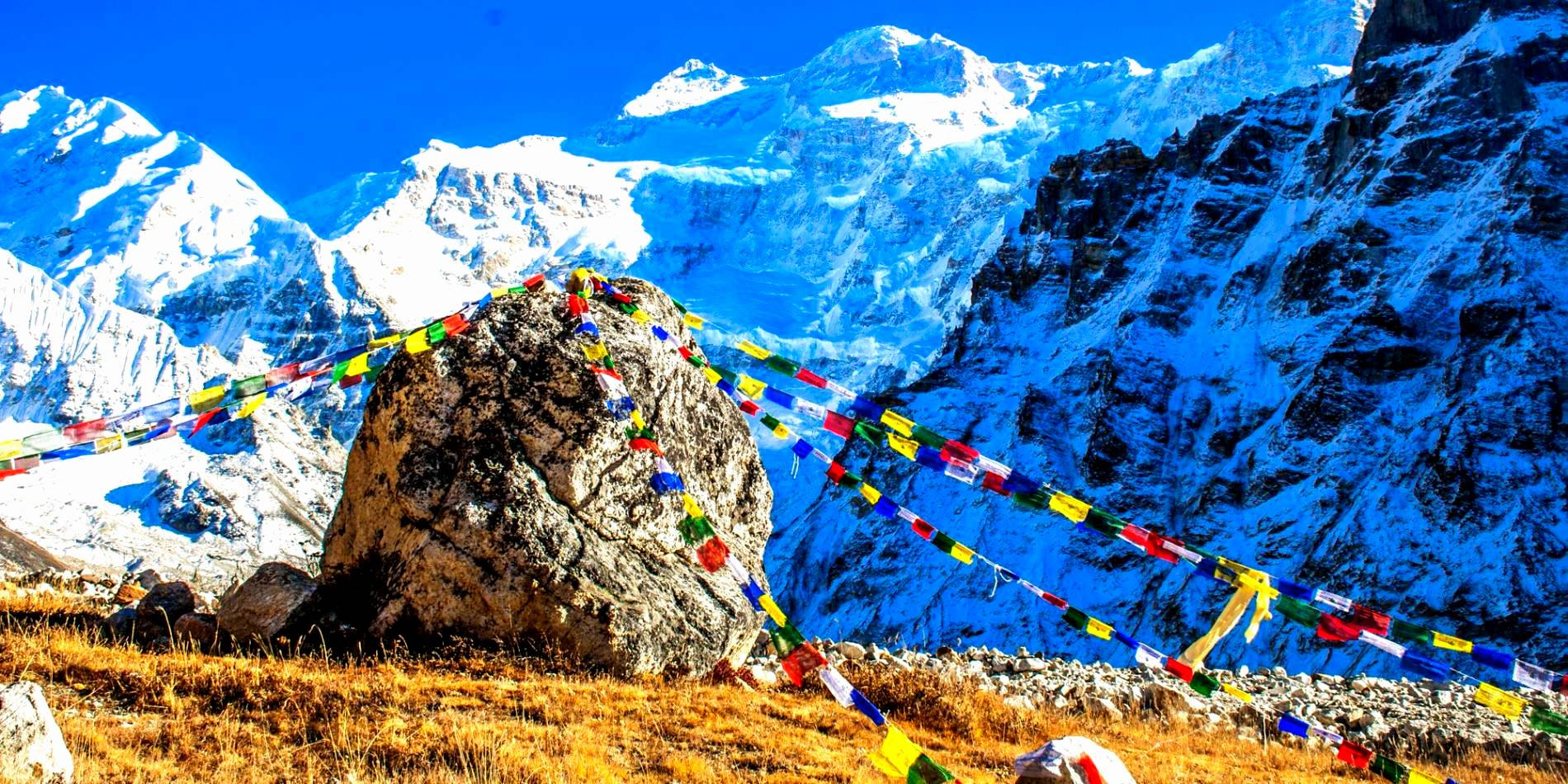
Key Features of the Kanchenjunga Base Camp Trek
-
Spectacular Mountain Vistas: This trek provides awe-inspiring close-up views of Mount Kanchenjunga, along with stunning panoramas of other massive Himalayan peaks. The trail takes you through diverse landscapes, from high-altitude alpine terrain to lush rhododendron forests and scenic meadows.
-
Wildlife and Biodiversity: Passing through the Kanchenjunga Conservation Area, the trek offers a chance to encounter a variety of wildlife. The region is home to endangered species such as the snow leopard, Himalayan black bear, red panda, and an array of bird species, making it a haven for nature lovers.
-
Cultural Richness: The trek allows visitors to immerse themselves in the unique traditions of the region's ethnic communities, including the Limbu, Rai, and Sherpa people. Trekkers can experience their vibrant festivals, traditional lifestyles, and warm hospitality, gaining a deeper understanding of Nepal's cultural diversity.
-
Remote and Unspoiled: Unlike the more popular trekking routes, the Kanchenjunga trail is less crowded, offering peaceful and serene paths. Its remote location means the area remains largely untouched by modernization, allowing trekkers to enjoy a truly off-the-beaten-path adventure.
-
Dual Base Camps: A unique feature of this trek is the opportunity to visit both the North and South Base Camps of Kanchenjunga. This adds variety to the journey, providing different perspectives of the majestic mountain and its surrounding peaks.
The Kanchenjunga Base Camp Trek is an ideal adventure for those looking to venture deep into the untouched Himalayas, far from the busier trekking routes. Combining physical challenges with cultural immersion, this trek offers a rare opportunity to connect with Nepal’s eastern mountain communities and their way of life. With its dramatic landscapes, unique wildlife, and peaceful trails, the Kanchenjunga Base Camp Trek promises a once-in-a-lifetime experience for intrepid trekkers seeking solitude and natural beauty.
Tsum Valley Trek
The Tsum Valley Trek is a hidden gem in Nepal, tucked away in the remote northern region of the country. Known as the "Valley of Happiness," this sacred valley offers a peaceful and spiritual trekking experience, enriched by its unique culture and stunning natural beauty. Due to its geographic isolation, the region has preserved its traditional Tibetan culture, providing trekkers with a rare and authentic experience.
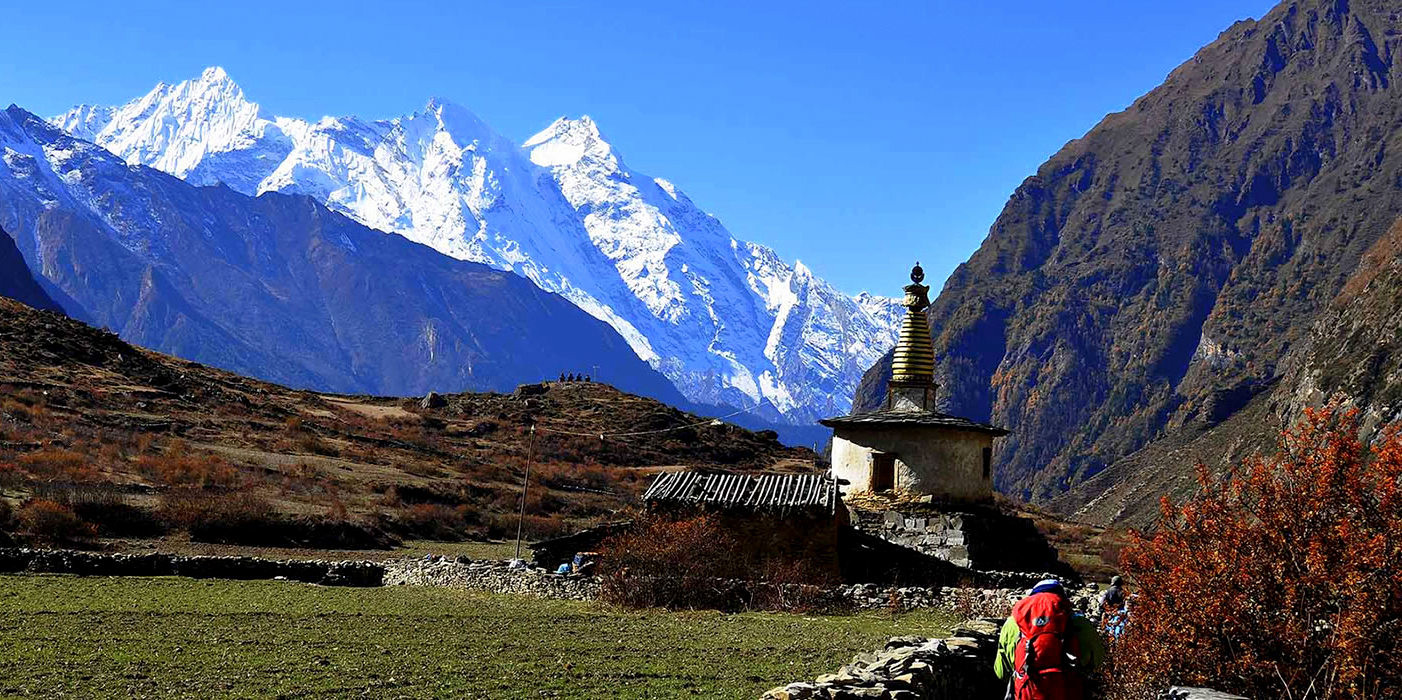
Key Features of the Tsum Valley Trek
-
Spiritual and Cultural Immersion: Tsum Valley is steeped in spiritual significance, home to ancient monasteries such as Rachen Gompa and Mu Gompa. The area is deeply rooted in Buddhist traditions, and trekkers have the opportunity to witness age-old rituals and practices that have remained unchanged for centuries.
-
Scenic Landscapes: The trek offers breathtaking views of the Ganesh Himal, Sringi Himal, and Boudha Himal ranges. Trails meander through lush forests, alongside picturesque rivers, and past terraced fields, showcasing the valley's diverse and captivating landscapes.
-
Peaceful and Secluded: Unlike the busier trekking routes in Nepal, Tsum Valley remains relatively untouched by mass tourism. This means fewer crowds and a quieter, more contemplative trekking experience, making it ideal for those seeking solitude and tranquility.
-
Rich Biodiversity: The region is known for its diverse wildlife, offering trekkers a chance to spot Himalayan Tahr, blue sheep, and possibly even the elusive snow leopard. The valley's rich flora and fauna add to its natural charm.
-
Traditional Villages: The trek takes you through picturesque Tibetan villages where life has remained largely unchanged for centuries. These villages provide a unique window into the traditional lifestyle and customs of the local communities, making the trek both visually and culturally enriching.
The Tsum Valley Trek is an extraordinary journey that not only challenges the body but also nourishes the mind and spirit. It offers an unparalleled glimpse into the lives of mountain communities that remain largely untouched by modernization, providing trekkers with a sense of peace and spiritual renewal. For those seeking a unique, off-the-beaten-path adventure filled with cultural depth and natural beauty, the Tsum Valley Trek is a perfect choice.
Makalu Base Camp Trek
The Makalu Base Camp Trek is a thrilling adventure into one of the most remote and untouched regions in Nepal's eastern Himalayas. Centered around Mount Makalu, the world’s fifth-highest peak at 8,463 meters, this trek is celebrated for its rugged terrain, awe-inspiring landscapes, and incredible biodiversity. It offers an unforgettable challenge for trekkers who want to explore less-traveled paths in a serene and isolated setting.
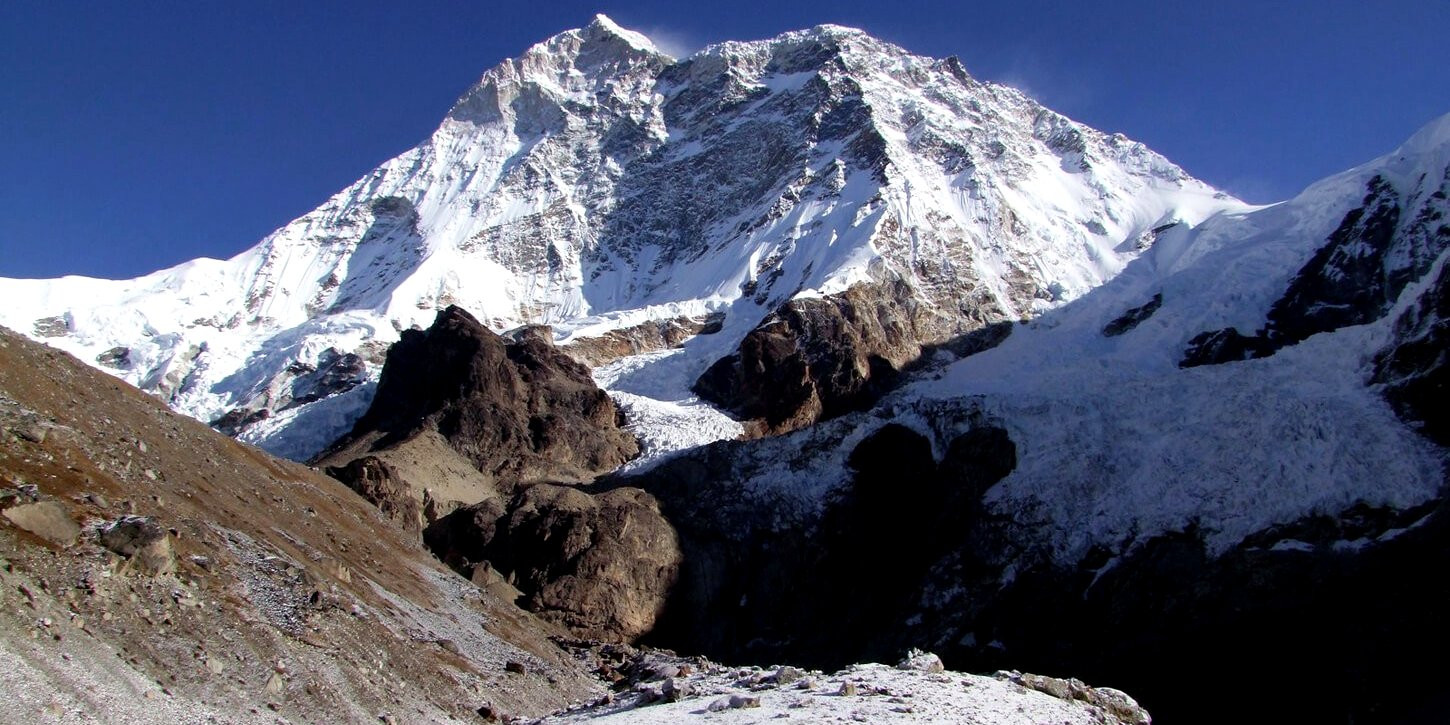
Key Features of the Makalu Base Camp Trek
-
Dramatic High-Mountain Scenery: The trek rewards adventurers with breathtaking views of Mount Makalu, as well as other iconic peaks like Everest, Lhotse, and Baruntse. The trail takes you through a variety of landscapes, from lush tropical forests at lower elevations to barren, glacial terrain near the base camp.
-
Biodiversity: As part of the Makalu Barun National Park and Conservation Area—a globally recognized biodiversity hotspot—the trek offers a chance to encounter a stunning variety of plants and wildlife. From vibrant rhododendrons and orchids to rare species like Snow Leopards, Red Pandas, and diverse birdlife, the region is a haven for nature enthusiasts.
-
Cultural Exposure: Although sparsely populated, the Makalu region is home to ethnic groups like the Rai and Sherpa communities. Trekkers have the opportunity to observe their traditional lifestyles, customs, and unique cultural practices, adding a rich cultural dimension to the journey.
-
Challenging Routes: This trek is known for its demanding trails, which include steep ascents, high-altitude paths, and rugged terrain. It’s an ideal choice for experienced trekkers looking for a strenuous yet rewarding adventure.
-
Remote and Less Crowded: Unlike the more popular trekking routes in Nepal, the Makalu Base Camp Trek sees fewer visitors, allowing trekkers to experience the tranquility and solitude of the Himalayas in their rawest form.
The Makalu Base Camp Trek is a perfect choice for those who want to push their physical limits while immersing themselves in one of Nepal’s most remote and wild regions. With its breathtaking scenery, rich biodiversity, and cultural encounters, this trek offers a deeply rewarding experience for adventurous trekkers. It’s a journey that tests your endurance while providing a profound connection to the natural and cultural wonders of the Himalayas.
Upper Dolpo Trek
The Upper Dolpo Trek is a captivating adventure into one of the most remote and mystical regions of the Himalayas, located in Nepal’s far-western corner. This trek provides a rare chance to uncover hidden territories reminiscent of the Tibetan highlands, offering stunning landscapes, ancient monasteries, and a unique Tibetan culture that has been preserved for centuries due to the area’s isolation.
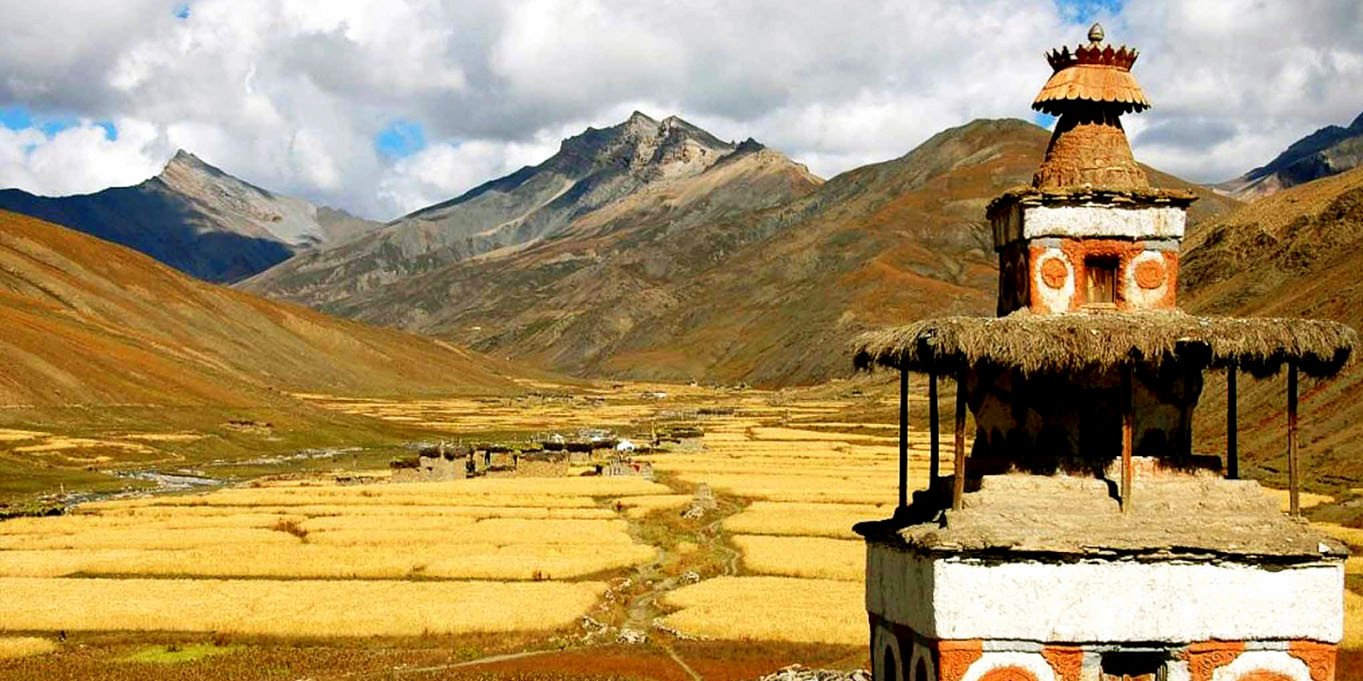
Key Features of the Upper Dolpo Trek
-
Ancient and Isolated Culture: Upper Dolpo is one of the few remaining regions where the pre-Buddhist Bon Po religion is still practiced. The area is dotted with ancient monasteries, including the renowned Shey Gompa, considered the spiritual heart of Upper Dolpo.
-
Spectacular Landscapes: The trek takes you through dramatic terrain, crossing high passes such as Shey La and Nangdalo La. These routes offer breathtaking views of the Dhaulagiri mountain range and the barren yet beautiful Tibetan Plateau-like scenery.
-
Phoksundo Lake: A highlight of the trek is the magnificent Phoksundo Lake, celebrated for its deep blue and emerald waters. As Nepal’s deepest and second-largest lake, it is surrounded by towering cliffs and lush forests, creating a surreal and serene atmosphere.
-
Rare Wildlife: Upper Dolpo is part of Shey Phoksundo National Park, home to rare and elusive species such as the snow leopard, blue sheep, and Tibetan wolf. The park’s diverse ecosystems make it a haven for wildlife enthusiasts and nature lovers.
The Upper Dolpo Trek is a journey into a hidden and magical world that combines thrilling adventure with deep cultural immersion. It is an ideal choice for those seeking off-the-beaten-path destinations and a chance to experience ancient traditions and untouched natural beauty. This trek not only tests your physical endurance but also offers a profound glimpse into the lives of communities thriving in one of the most isolated parts of Nepal. For adventurers yearning for solitude, spirituality, and stunning landscapes, the Upper Dolpo Trek is truly unforgettable.
Rara Lake Trek
The Rara Lake Trek is a mesmerizing journey to Rara Lake, Nepal’s largest and most enchanting lake, celebrated for its pristine turquoise waters and serene, picturesque surroundings. Situated in the remote northwestern region of Nepal, this trek is perfect for those seeking tranquility and a break from the busier trekking routes, offering a truly peaceful escape into nature.
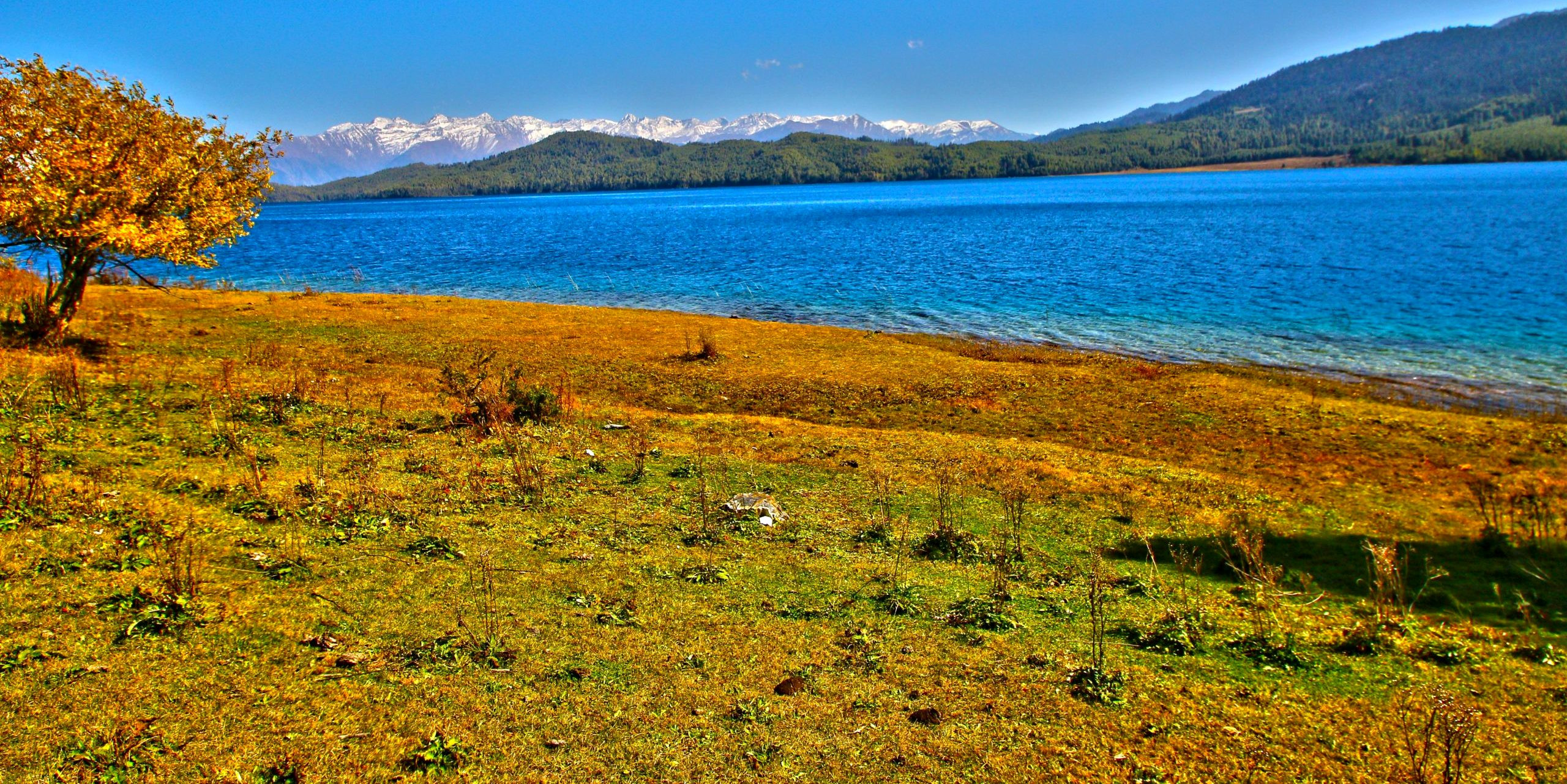
Key Features of the Rara Lake Trek
-
Stunning Natural Beauty: Rara Lake, the centerpiece of Rara National Park, is renowned for its crystal-clear blue waters and breathtaking scenery. Surrounded by rolling alpine meadows and dense forests of pine, spruce, and juniper, the lake offers a stunning backdrop of unspoiled natural beauty and tranquility.
-
Rich Biodiversity: The area around Rara Lake is a haven for biodiversity, home to a variety of wildlife including the Himalayan black bear, leopard, Himalayan goral, and numerous bird species. The park is especially famous for bird watching, making it a paradise for nature enthusiasts.
-
Cultural Insights: The trek takes you through remote villages where you can experience the traditional lifestyles of the Jumli and Malla communities. Their warm hospitality, unique customs, and vibrant culture add a rich and memorable dimension to the trekking experience.
-
Peaceful Trekking Experience: Rara Lake’s remote location and the limited number of visitors make this trek a serene and intimate journey. It’s an ideal choice for trekkers seeking quiet moments to reconnect with nature amidst the serene Himalayan wilderness.
-
Accessible Yet Remote: Despite its remote location, the Rara Lake Trek is considered moderate and more accessible compared to higher-altitude treks in Nepal. This makes it a great option for trekkers who want a less demanding yet equally rewarding Himalayan adventure.
The Rara Lake Trek is a truly special adventure that immerses you in the untouched natural beauty and serene environment of Nepal’s largest lake. It’s a perfect choice for those who want to enjoy the Himalayas’ stunning landscapes, rich biodiversity, and vibrant cultural heritage away from the crowds of more popular trekking routes. With its peaceful trails, spectacular scenery, and meaningful cultural encounters, the Rara Lake Trek is a hidden gem waiting to be discovered.
Guerrilla Trek
The Guerrilla Trek is a fascinating journey that combines stunning natural beauty with significant historical context. Following the trails once used by Maoist insurgents during Nepal’s decade-long civil war (1996–2006), this trek takes adventurers through some of the less explored yet historically rich regions of western Nepal. It offers a rare opportunity to delve into the nation’s recent past while experiencing breathtaking landscapes and remote rural life.
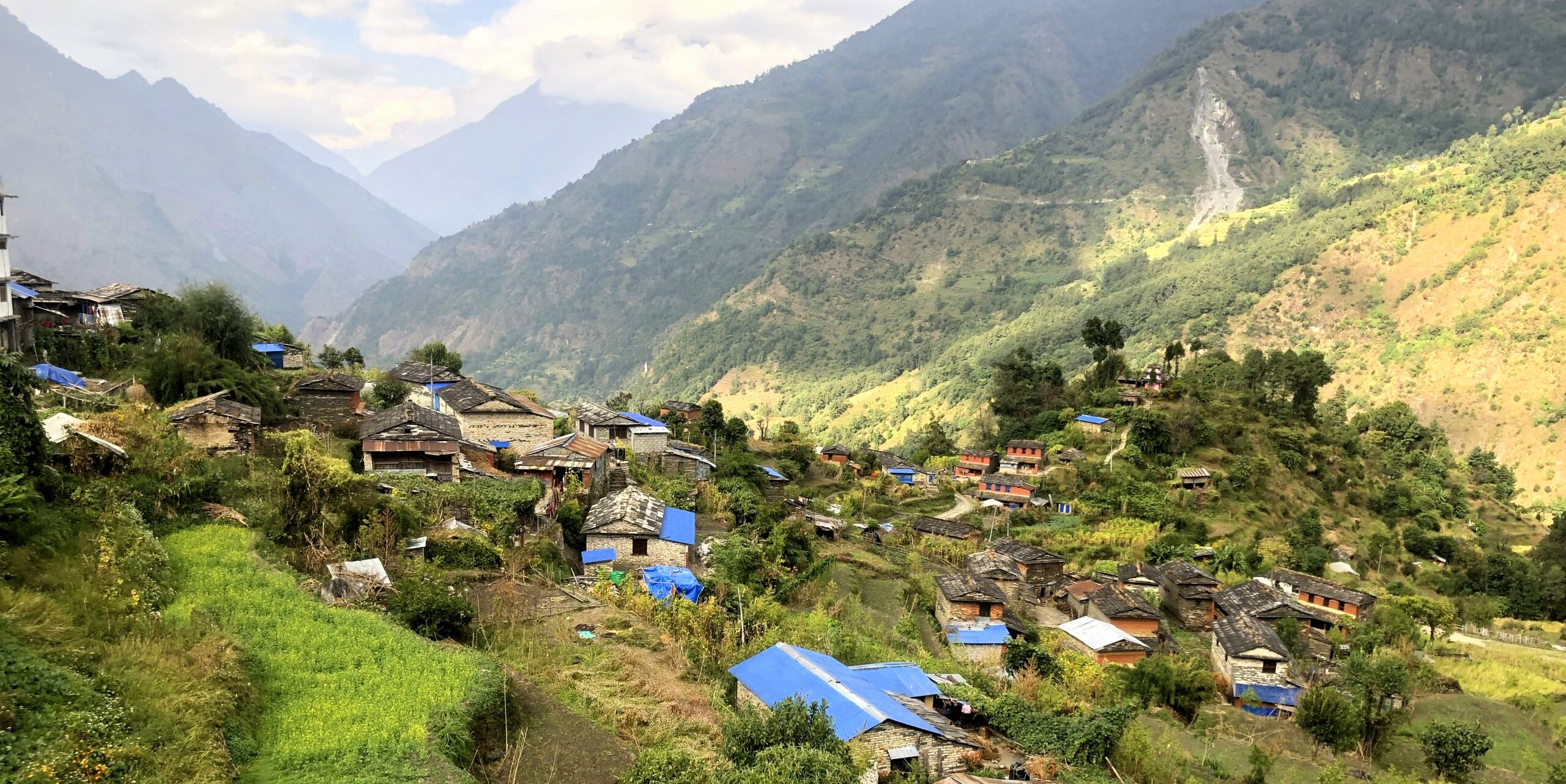
Key Features of the Guerrilla Trek
-
Historical Significance: This trek follows routes that were used by guerrillas during Nepal’s civil conflict, with many sites along the way steeped in historical importance. Trekkers have the unique opportunity to explore these areas while learning about Nepal’s contemporary history, adding a deeper layer of meaning to the adventure.
-
Stunning Landscapes: The trek takes you through diverse terrains, ranging from lush forests and terraced farmlands to high alpine meadows and rugged mountain trails. Along the way, you’ll enjoy panoramic views of the Dhaulagiri and Annapurna mountain ranges, as well as pristine wilderness.
-
Cultural Immersion: The trail winds through villages inhabited by various ethnic groups, including the Magars, Chhetris, and Gurungs. Trekkers can experience the rich cultural heritage, traditional lifestyles, and warm hospitality of these communities, making the journey both visually and culturally enriching.
-
Remote and Untouched Paths: Unlike Nepal’s more popular trekking routes, the Guerrilla Trek is relatively unknown, offering a quieter and more authentic trekking experience. Its remote and untouched paths allow trekkers to immerse themselves in the raw beauty of Nepal’s countryside without the crowds.
-
Flexible Itineraries: The trek is highly versatile, with itineraries that can be tailored to suit different preferences and fitness levels. Whether you prefer a shorter 10-day trek or a more extended three-week journey, the route can be customized to your liking.
The Guerrilla Trek is more than just a physical trek—it’s an exploration of Nepal’s history and culture, set against the backdrop of its stunning natural landscapes. This trek offers a unique combination of adventure and insight, allowing trekkers to discover the remote regions that were pivotal during Nepal’s civil war while enjoying the cultural richness and rugged beauty of the western Himalayas. Ideal for those seeking something different from the traditional trekking routes, the Guerrilla Trek promises a meaningful and unforgettable experience.
Tips for Best Underrated Treks in Nepal
Nepal’s underrated treks is an incredible way to discover some of the most untouched and serene environments in the world. To make the most of your journey, here are some essential tips to help you prepare and enjoy your trek:
-
Choose the Right Season: The best time to trek in Nepal is during the pre-monsoon (spring, March to May) and post-monsoon (autumn, September to November) seasons. These periods generally offer stable weather, clear skies, and the best mountain views. Avoid trekking during the monsoon (June to August), as trails can become slippery, and cloud cover often obscures the scenery.
-
Acquire Necessary Permits: Many underrated treks, such as the Manaslu Circuit, Upper Dolpo, and Kanchenjunga Base Camp, are located in restricted areas that require special permits. Make sure you have all the necessary permissions before starting your trek. Trekking agencies can assist with obtaining these permits.
-
Prepare for Altitude: High-altitude treks like the Manaslu Circuit and Makalu Base Camp pose a risk of altitude sickness. Acclimatization is crucial—plan your trek to allow time for your body to adjust. Learn the symptoms of altitude sickness and how to manage them to stay safe.
-
Hire a Guide or Porter: Given the remoteness and unfamiliarity of these lesser-traveled routes, hiring a guide or porter can significantly enhance your experience. Guides can help with navigation, share cultural and historical insights, and ensure your safety. Porters can ease the physical burden by carrying heavy loads.
-
Pack Appropriately: Weather conditions can vary dramatically depending on the altitude, so pack layers of clothing, including waterproof and windproof gear. Essential items include sturdy trekking boots, a high-quality sleeping bag suitable for cold temperatures, and a first-aid kit.
-
Respect Local Customs: Many of these trekking regions are rich in unique cultures and traditions. Respect the local way of life by dressing modestly, learning a few basic phrases in the local language, and always asking permission before taking photos of people or religious sites.
-
Stay Environmentally Conscious: Help preserve the natural beauty of Nepal by minimizing your environmental impact. Carry out all your trash, avoid single-use plastics, and opt for biodegradable products. Be mindful of fragile ecosystems as you trek.
-
Be Physically Prepared: Underrated treks are often more demanding than the well-established routes. Prepare your body with cardiovascular exercises, strength training, and practice hikes that simulate the conditions you’ll face on the trail.
-
Stay Informed and Insured: Check the latest information about your trekking route, including weather conditions and local travel advisories. Purchase travel insurance that covers high-altitude trekking, as it provides a safety net in case of emergencies, such as injuries or evacuations.
-
Plan for Communication: Many remote areas in Nepal have limited or no mobile network coverage. Consider carrying a GPS device or renting a satellite phone to ensure you can communicate in case of an emergency.
By following these tips, you’ll be well-prepared to embark on one of Nepal’s underrated treks safely and enjoyably. These hidden gems promise unforgettable experiences, combining breathtaking landscapes, cultural richness, and the tranquility of off-the-beaten-path adventures.
Ideal Time for Best Underrated Treks in Nepal
The ideal time to embark on Nepal’s underrated treks largely depends on the region and altitude, but there are general patterns that make certain seasons more favorable. The two best seasons for trekking are spring and autumn, as they offer stable weather, clear skies, and comfortable temperatures, providing the perfect conditions for exploring the Himalayas.
Spring (March to May): Spring is one of the most popular seasons for trekking in Nepal. Here’s why:
-
Weather: The weather is stable with warm days and cool nights. As the season progresses, temperatures rise, making high-altitude trekking more pleasant.
-
Visibility: Skies are generally clear, especially in April and May, offering incredible views of the surrounding mountains.
-
Nature: This season comes alive with blooming rhododendrons and wildflowers, particularly at lower elevations, adding vibrant colors to the trails and enhancing the overall trekking experience.
Autumn (September to November): Autumn is widely regarded as the best overall season for trekking in Nepal, thanks to its ideal conditions:
-
Weather: Following the monsoon, the weather stabilizes and becomes cooler, providing dry days and mild temperatures—perfect for trekking.
-
Visibility: Known for its crystal-clear skies, autumn offers the best mountain views with minimal cloud cover, making it ideal for photography and scenic vistas.
-
Cultural Festivals: This season coincides with major Nepali festivals like Dashain and Tihar, giving trekkers a chance to experience vibrant local traditions and celebrations along the trails.
Off-Season Considerations
-
Summer/Monsoon (June to August): Trekking during the monsoon can be challenging due to heavy rain, slippery trails, leeches, and obscured mountain views. However, regions like Upper Mustang and Upper Dolpo, which lie in the rain shadow of the Himalayas, remain relatively dry and are excellent options for monsoon trekking.
-
Winter (December to February): Winter trekking is possible but comes with challenges such as very cold temperatures, shorter daylight hours, and potential snow at higher altitudes. That said, the trails are far less crowded, and the snow-covered peaks create breathtaking landscapes.
Spring and autumn are undoubtedly the best seasons for trekking in Nepal, offering ideal weather and spectacular views. However, the choice of when to trek can also depend on your personal preferences and what you wish to experience. Each season provides a unique perspective of Nepal’s stunning landscapes, rich biodiversity, and vibrant cultural life. Whether you’re looking for colorful blooms, peaceful snow-covered trails, or cultural festivities, Nepal’s trekking seasons have something special to offer.
Nepal’s underrated treks provide a rare and extraordinary chance to immerse yourself in some of the world’s most secluded and breathtaking landscapes. Whether it’s the cultural richness of Tsum Valley or the high-altitude adventure of Kanchenjunga Base Camp, these trails promise unique and rewarding experiences far from the busier trekking routes. Best undertaken during spring and autumn for their favorable weather and clear mountain views, these treks appeal to seasoned adventurers seeking challenges as well as those looking for peaceful encounters with nature and ancient traditions. For anyone eager to explore Nepal’s hidden treasures and delve deeper into its natural beauty and cultural heritage, these underrated treks are the perfect choice.
FAQs for Best Underrated Treks in Nepal
Q: What makes a trek in Nepal "underrated"?
A: An underrated trek is typically less known and less crowded compared to popular treks like the Everest Base Camp or Annapurna Circuit. These treks offer stunning scenery and authentic cultural experiences but receive fewer visitors due to their remote locations or perceived difficulty.
Q: Which underrated trek offers the best cultural experience?
A: The Tsum Valley Trek and Upper Dolpo Trek are excellent for cultural experiences, exploring regions with strong Tibetan influences and preserving ancient traditions.
Q: Are these treks suitable for beginners?
A: Some underrated treks can be challenging due to their remote nature and lack of facilities. However, treks like the Rara Lake Trek are considered moderate and suitable for beginners who are in good health and have some hiking experience.
Q: What is the best time of year to undertake these treks?
A: The best times for these treks are during the spring (March to May) and autumn (September to November) when the weather is stable, and the views are clear. Winter and monsoon seasons are less ideal due to snow and rain.
Q: Do I need a guide for these treks?
A: Yes, especially for treks in restricted areas like Manaslu or Upper Dolpo, hiring a guide is mandatory. Guides ensure safety and enrich the experience by sharing local knowledge and handling logistical details.
Q: What are the permit requirements?
A: Permit requirements vary depending on the trek. Restricted areas typically require a special permit, in addition to the standard TIMS card. Consulting with a trekking agency is advised to ensure all paperwork is in order.
Q: What should I pack for an underrated trek in Nepal?
A: Essential items include a good-quality backpack, sturdy trekking boots, a sleeping bag suited for cold climates, layered clothing, a waterproof jacket, and a first aid kit. Also, consider packing a water purification system and energy snacks.
Q: How can I ensure my safety during these treks?
A: Ensure you are physically prepared, travel with a knowledgeable guide, and have the necessary gear and supplies. Also, invest in comprehensive travel insurance that covers high-altitude trekking and emergency evacuation.
Q: How do these treks impact the local communities?
A: These treks can provide significant economic benefits to local communities through tourism. Trekkers are encouraged to respect local customs and purchase local goods and services to support the communities.
Q: What are the biggest challenges I might face on these treks?
A: Challenges include dealing with altitude sickness, navigating difficult terrains, managing basic accommodation and facilities, and preparing for sudden weather changes.
For the Nepal tour, please click here.
If you are looking for different kinds of Nepal Tours or Trekking Packages, feel free to contact us.
